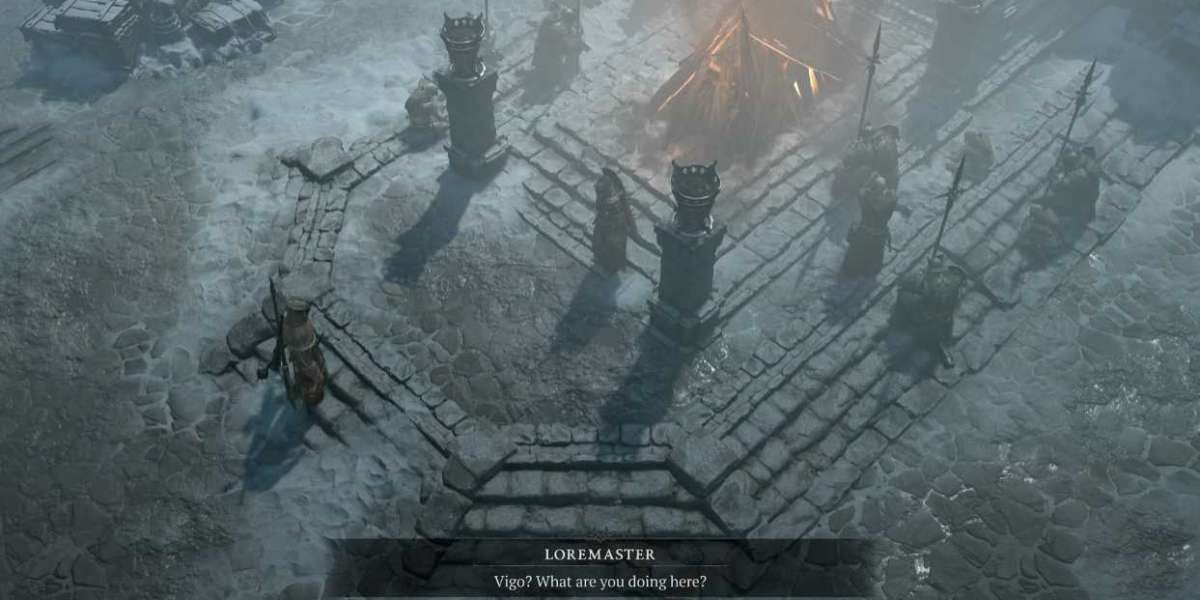Diablo 4's Vessel of Hatred expansion has introduced major changes, making it an exciting time for both newcomers and returning players. Whether you're stepping into Diablo 4 Gold Sanctuary for the first time or jumping back in after a break, this guide will walk you through everything—from character creation to mastering the endgame.
Getting Started: Character Creation and Campaign Choices
1. Choosing Your Class
Diablo 4 now features six playable classes, including the new Spiritborn, alongside the Barbarian, Sorcerer, Necromancer, Druid, and Rogue. Each class offers a distinct playstyle:
Barbarian – A brutal melee fighter specializing in raw strength and weapon mastery.
Sorcerer – A ranged spellcaster wielding devastating elemental magic.
Necromancer – A dark summoner who commands undead minions and manipulates life and death.
Druid – A shapeshifter who harnesses the power of nature.
Rogue – A versatile fighter with both ranged and melee combat options.
Spiritborn – A mystical warrior with spiritual abilities (new in Vessel of Hatred).
After selecting your class, customize your character's appearance and gender before finalizing your choice.
2. Campaign Selection
Once your character is ready, you'll choose between two campaigns:
Original Campaign – The base game's storyline.
Vessel of Hatred Campaign – The new expansion's narrative, continuing the story after the base game.
If you've already completed the original campaign, you can skip straight to Vessel of Hatred. A recap is available to refresh your memory on key events.
3. Seasonal vs. Hardcore Mode
Seasonal Characters – Highly recommended, as they unlock new seasonal mechanics, rewards, and challenges.
Hardcore Mode – Only for the bravest players, as death is permanent.
Understanding Paragon Levels and Renown
1. Paragon Levels
After hitting level 60, you'll start earning Paragon Points, which are account-wide. These points unlock powerful upgrades in the Paragon Board, enhancing your character's abilities.
Glyphs – Special modifiers that fit into sockets on the Paragon Board, boosting specific stats.
Legendary Nodes – Game-changing bonuses that define your build.
2. The Renown System
Renown is earned by exploring zones, completing side quests, and unlocking waypoints. Each region offers tiered rewards:
Tier 1 – Gold and a Skill Point.
Tier 2 – Extra Potion Capacity.
Tier 3 – More Gold and another Skill Point.
Tier 4 – Paragon Points.
Tier 5 – Gold and increased Max Obols (used for gambling at vendors).
Completing Renown in all regions grants 12 extra Skill Points and 24 Paragon Points, making it essential for maximizing your power.
Gameplay Basics: Quests, Mounts, and Fast Travel
1. Types of Quests
Gold (Main Story Quests) – Progresses the campaign.
Purple (Priority Quests) – Unlocks crucial mechanics like class passives and crafting.
Blue (Side Quests) – Optional missions that provide lore and Renown.
2. Mounts and Fast Travel
Mounts – Press Z (PC) to summon your mount. Use Spacebar to sprint.
Waypoints – Fast travel instantly by clicking any unlocked waypoint on the map.
Town Portals – Leave a portal behind to return to your previous location.
Endgame Activities
1. Helltides
These are timed events where enemies drop Aberrant Cinders and Baneful Hearts.
Spend Cinders on special chests for high-tier loot.
Participate in Accursed Rituals (contribute Baneful Hearts for better rewards).
2. Infernal Hordes
A wave-based combat mode where you earn Aether to open reward chests.
Great for farming gear, materials, and gold.
Choose your rewards based on the Aether you collect.
3. Nightmare Dungeons
These are sigil-based dungeons that scale with difficulty.
Previously used for glyph upgrades, but now The Pit handles that.
Still valuable for loot and experience.
4. The Pit (Greater Rifts)
This is where you unlock Torment difficulties and upgrade glyphs.
Tier 20 = Torment 1
Tier 35 = Torment 2
Tier 50 = Torment 3
Glyph leveling – Upgrade glyphs to enhance your Paragon Board.
5. Uber Bosses
Summon and defeat powerful bosses for unique and Mythic items:
Varon (Malignant Burrow) – Requires 4 Malignant Hearts.
Lord Zir (Layer of Lord Zir) – Requires 12 Exquisite Blood.
Beast in the Ice (Glacial Fissure) – Requires 12 Distilled Fear.
Grigoire (Hall of the Penitent) – Requires 12 Living Steel.
Uber Duriel (Gaping Crevasse) – Needs Mucus-Slick Egg + Shard of Agony.
Lilith (Echo of Hatred) – No summoning materials, but first kill grants a Resplendent Spark.
6. The Undercity (New Endgame Content)
Rune Farming – Collect runes for crafting and upgrades.
Weekly Raids (Dark Citadel) – Requires 2+ players for high-tier rewards.
Crafting and Gear Progression
1. Tempering
Adds two custom affixes to gear.
Limited rerolls, so choose wisely.
Scroll of Restoration (from Dark Citadel) resets tempering attempts.
2. Masterworking
Upgrades existing affixes on gear.
Ranks 4, 8, and 12 provide massive stat boosts.
3. Mythic Uniques
Crafted using Resplendent Sparks (earned from Lilith, salvaging Mythics, or Season Journey).
Rune Words – A new system for powerful gear enhancements.
Final Tips for New Players
Complete Renown Early – Extra Skill Points and Paragon Points are game-changers.
Farm Helltides Infernal Hordes – Great for materials and high-tier loot.
Upgrade Glyphs in The Pit – Essential for late-game power scaling.
Join a Clan – Some content (like Dark Citadel) requires teamwork.
Experiment with Builds – The new Paragon system is more flexible than ever.
Conclusion
Diablo 4's Vessel of Hatred expansion has deepened the endgame with new activities, crafting systems, and challenges. Whether you're leveling your first character or optimizing an endgame build, this guide covers all the essentials.
What's your favorite class in Diablo 4? Let us know Diablo IV gold in the comments!



